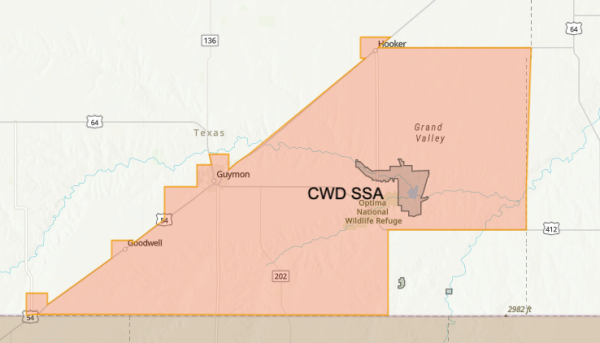
|
Oklahoma's fourth case of a wild deer infected with Chronic Wasting Disease (CWD) was confirmed this month in the Oklahoma Panhandle. The white-tailed deer was located in Texas County after a landowner reported the animal behaving abnormally.
CWD is an always-fatal neurological disease that affects deer, elk, moose, and other members of the cervid family, creating holes in the brain resembling those in sponges.
As part of the state's CWD Response Strategy, the confirmation has prompted the Oklahoma Department of Wildlife Conservation to expand the existing Selective Surveillance Area (SSA) for chronic wasting disease in Texas County westward and southward. The CWD Response Strategy is a plan jointly produced by the Wildlife Department along with the Oklahoma Department of Agriculture, Food and Forestry.
Hunters who harvest a deer within the SSA boundary must comply with specific regulations for handling and moving deer and other cervid parts outside the area. These boundary changes, along with cervid transport rules within an SSA, can be viewed at wildlifedepartment.com/hunting/resources/deer//cwd/ssa. The site also includes information about voluntary testing sites in Oklahoma's three active SSAs. Dispersed across SSAs in northwestern Oklahoma, the testing sites are locations where hunters may choose to leave the head of their harvested deer or elk to be tested for CWD.
"The Wildlife Department is implementing its response plan to monitor and slow the potential spread of CWD," said Dallas Barber, wildlife biologist over big game for the Wildlife Department. "Our priority is to continue to ensure the health and management of our deer herd in Oklahoma, and the steps in our CWD Response Strategy will help us do that."
The Wildlife Department has conducted CWD monitoring on hunter-harvested deer and elk and road-killed deer since 1999 following the discovery of the disease in a private, commercial elk herd in 1998. The first in-state CWD case in free-ranging deer was confirmed in June 2023 in Texas County. CWD does not affect pronghorn antelope, and natural CWD transmission from wild animals to humans or livestock has never been documented.
Additional human health information relating to CWD is available at https://www.usgs.gov/centers/nwhc/science/chronic-wasting-disease#publications. For more information on the disease, hunting regulations, and proper disposal of infected animals, go to https://www.wildlifedepartment.com/hunting/resources/deer/cwd.